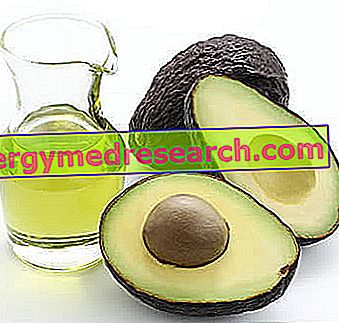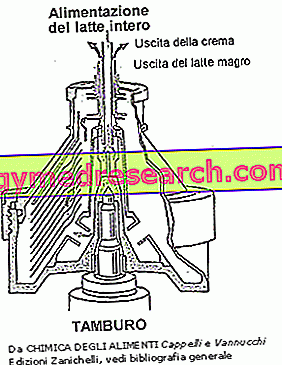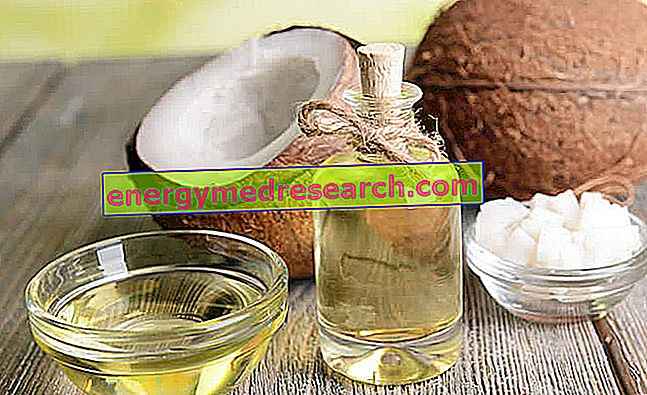Introduction The uses of avocado oil are many and varied. This product, in fact, has numerous properties that make it useful both in the nutritional and in the cosmetic field. The interesting properties ascribed to the oil in question are due to its rich composition and, in particular, to the acidic component which makes it similar in many respects to olive oil
Category oils and fats
"The butter is a food product obtained by processing the cream obtained from cow's milk or from its serum" Butters produced with milk from different species, such as goat's or sheep's milk, must state their origin on the label. Butter production Extraction of the creamBurrificationHomemade Murder Homemade Butter Nutritional Properties Chemical composition and nutritional value Classification Butter or margarine - butter or olive oil
Introduction: olive oil Olive tree: botanical aspects and cultivation Mature olive composition, nutritional properties Olive harvest Olive oil: chemical composition Olive oil: properties and nutritional characteristics Preparation of olive oil Olive oil conservation Pomace oil Classification of olive oils, analysis and fraud Olive oil as a laxative Olive in herbal medicine - sea buckthorn Cosmetic use: olive oil - Unsaponifiable with olive oil - Olive leaf extract The extraction of oil from olives is done mainly with three systems: for pressure (classic, discontinuous method) by centrifugation
Animal fats: what are they? Animal fats are food products of generally solid or semi-solid consistency, obtained from animal tissues with a high fat content. Among the best known representatives of the category we remember: Butter : food product obtained by processing the cream obtained from cow's milk or from its serum
Introduction "Mixtures and emulsions packaged with dietary fats of animal and vegetable origin, different from butter and pork fat, containing more than 2% moisture and a fat content not less than 80, have the generic and obligatory margarine denomination. % " Margarine is an emulsion of water in oil; more precisely it is formed by a lipid fraction, an aqueous fraction and some minor constituents (dyes of natural origin, antimicrobials, emulsifiers and preservatives)
The most common seed oils Seed oils are oils obtained from fruits or seeds of plants and trees other than the olive tree. These products are used first of all in the food sector, but they are also used in cosmetics (wheat germ, avocado oil ...), in the chemical industry (especially in the paint industry), and in the pharmaceutical industry (eg as a vehicle for some drugs, in the preparation of infusions for parenteral nutrition, etc
What is coconut oil? Coconut oil (or copra oil) is obtained from the fruits of the homonymous plant (botanical name Cocos nucifera ), typical of tropical coasts. The seeds of these fruits (the famous coconuts ), suitably deprived of the outermost fibrous envelope and of the woody wrapping that surrounds them, are white, fleshy and tasty
Production and Employment How is peanut oil produced? Peanut oil is extracted from the seeds of the homonymous plant ( Arachys hypogea L.), with a yield ranging between 40 and 50%. From the seeds, the oil can be extracted by pressure or more commonly through chemical solvents. Various grinding processes follow, to give the product acceptable organoleptic characteristics
Safflower oil is extracted from the seeds of the homonymous plant ( Carthamus Tinctorius ) and destined above all to the food industry, to the energy industry (biodisel) and to the production of paints and resins. The safflower is a herbaceous plant similar to ginger, with seeds containing 30 to 55% of oil, of variable acidic composition depending on the varieties considered
The grinding or refining systems consist of a series of operations necessary to make an oil edible. In particular, seed oils are in fact often characterized by odors and colors that can be quite unpleasant. For the single type of oil it is not said that all the grinding systems are carried out, since these are obviously selected in relation to the defects it presents; if for example an oil is devoid of unpleasant shades, the passage of the discoloration is skipped
Generality Borage seed oil ( Borago officinalis ) - cold pressed - is the most important source of gamma-linolenic acid (GLA), a semi-essential fatty acid belonging to the omega-six family. Gamma-linolenic acid is normally synthesized by the body from linoleic acid, a fatty acid found mainly in dried fruit and vegetable oils











